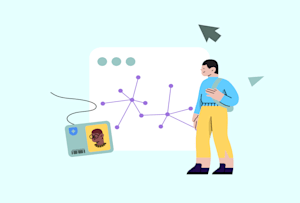Introduction
In today’s data-driven world, analytics and business intelligence (BI) have become essential for organizations aiming to thrive in competitive markets. By harnessing the power of data, companies can make informed decisions, optimize operations, and achieve better outcomes. From small startups to large enterprises, analytics and BI are tools that help businesses understand complex data and gain insights to drive strategic goals. In this article, we will explore what analytics and business intelligence are, their history, their impact on daily life, and why they are indispensable in modern society.
What is Analytics and Business Intelligence?
Analytics refers to the process of examining data to uncover patterns, trends, and insights that can inform decision-making. It involves various methods, including statistical analysis, data mining, and predictive modeling, to interpret data and predict future outcomes. Analytics can be descriptive (understanding past behavior), diagnostic (understanding why something happened), predictive (forecasting future outcomes), or prescriptive (recommending actions).
Business Intelligence (BI), on the other hand, is the use of technology, processes, and tools to collect, analyze, and present business data in a way that helps organizations make more informed decisions. BI systems enable businesses to gather data from various sources, transform it into actionable insights, and use it to optimize strategies and operations. BI tools often include dashboards, reporting tools, and data visualization platforms.
Together, analytics and business intelligence empower businesses to leverage data effectively to enhance their performance, improve customer satisfaction, and remain competitive.
A Brief History of Analytics and Business Intelligence
The roots of business intelligence date back to the 1950s when businesses started using early data processing techniques to streamline operations. However, the term “business intelligence” wasn’t coined until the 1980s by Howard Dresner, an analyst at Gartner. BI emerged as a powerful tool in the 1990s as data warehousing and data mining technologies advanced, enabling organizations to consolidate vast amounts of data and analyze it more effectively.
In the 2000s, the rise of more advanced analytics tools and technologies, such as machine learning and artificial intelligence (AI), further expanded the capabilities of BI. Today, BI and analytics are deeply integrated into the daily operations of businesses, with companies relying on sophisticated data platforms to gain insights that guide strategic decisions.
How Analytics and Business Intelligence Impact Daily Life
- For Businesses: Analytics and BI tools help businesses understand their operations, customer behaviors, and market trends. By analyzing sales data, customer feedback, and industry trends, businesses can improve their products, refine their marketing strategies, and forecast future demand. This data-driven approach helps organizations stay agile and responsive to changing market conditions.
- For Decision-Makers: Executives and managers use analytics and BI to make more informed decisions. Dashboards and reports provide real-time data that help decision-makers track key performance indicators (KPIs), assess operational efficiency, and measure the effectiveness of strategies. The insights derived from BI tools enable leaders to spot potential problems, identify opportunities for growth, and guide business direction with confidence.
- For Customers: Analytics and BI also have a direct impact on customers. Businesses use data to personalize products, services, and marketing efforts, ensuring that they meet customer needs more effectively. From personalized recommendations on e-commerce sites to targeted advertisements, data-driven strategies enable businesses to engage customers in more meaningful ways, enhancing their overall experience.
- For Employees: Employees benefit from analytics and BI as well. By using BI tools, employees can access up-to-date data and reports that help them perform their jobs more effectively. Sales teams can track their progress in real-time, marketing teams can measure the success of campaigns, and finance teams can monitor budgets and forecasts. This access to valuable information empowers employees to contribute to the company’s success in a more data-informed manner.
Fun Facts About Analytics and Business Intelligence
- The Rise of Big Data: Analytics and BI are closely tied to the explosion of “big data”—large, complex datasets generated from a variety of sources, including social media, sensors, and transactional systems. Big data analytics allows organizations to uncover insights from this vast pool of data and turn it into actionable intelligence.
- AI and Machine Learning Integration: Many modern BI systems integrate artificial intelligence and machine learning, allowing them to continuously improve their analysis and predictions. This has enhanced the capabilities of analytics, making it possible to predict customer behaviors, automate processes, and offer smarter recommendations.
- Data Visualization Growth: Data visualization tools like Tableau and Power BI have made it easier to present complex data in visually compelling ways. This has democratized data analysis, enabling non-technical users to interpret and act on business insights with ease.
- Global BI Market Size: The global business intelligence market is projected to grow from $26.5 billion in 2020 to $42.5 billion by 2025, reflecting the increasing demand for data-driven decision-making tools across industries.
FAQs About Analytics and Business Intelligence
- What are the main differences between analytics and business intelligence? While both analytics and BI aim to use data to improve decision-making, the key difference is that BI focuses on descriptive analysis and presenting historical data to inform decisions, while analytics involves deeper data exploration, often predictive and prescriptive, to uncover patterns and guide future actions.
- What industries use analytics and business intelligence? Analytics and BI are used in nearly every industry, including retail, healthcare, finance, marketing, and manufacturing. For example, healthcare providers use BI to improve patient care, retailers use analytics to optimize inventory, and financial institutions use BI to assess risk and make investment decisions.
- How do businesses use predictive analytics? Predictive analytics uses historical data, statistical algorithms, and machine learning techniques to forecast future outcomes. Businesses use predictive analytics to anticipate customer behaviors, optimize supply chains, predict sales trends, and reduce operational costs.
- How can small businesses benefit from analytics and BI? Small businesses can benefit from analytics and BI by gaining insights into customer preferences, optimizing marketing strategies, and improving operational efficiency. There are many affordable BI tools available to small businesses that can help them make data-driven decisions without large upfront investments.
- Are there any risks associated with analytics and BI? While analytics and BI offer many benefits, there are risks related to data privacy, security, and misuse. Businesses must ensure that they comply with data protection regulations and implement robust cybersecurity measures to protect sensitive data.
Observance and Appreciation
As we continue to advance into the era of data, it’s clear that analytics and business intelligence play a critical role in shaping industries and driving innovation. These technologies allow businesses to harness the power of data to make smarter decisions, boost productivity, and stay ahead of competitors. The widespread adoption of analytics and BI is transforming not just businesses but entire industries, helping them thrive in a world driven by data.
The Significance of Analytics and Business Intelligence to Society
- Empowering Decision-Making: By providing actionable insights, analytics and BI empower businesses and organizations to make better, data-informed decisions. Whether it’s a company trying to understand customer preferences or a government agency trying to optimize public services, the ability to access and interpret data is crucial for success.
- Driving Economic Growth: Analytics and BI are essential drivers of economic growth. By enabling businesses to optimize operations and reduce costs, these technologies help boost productivity and profitability, which in turn contributes to job creation, innovation, and wealth generation.
- Advancing Healthcare: In the healthcare sector, analytics and BI have the potential to revolutionize patient care. By analyzing vast amounts of health data, providers can predict patient outcomes, improve treatment plans, and reduce costs, ultimately enhancing the quality of care.
- Supporting Education: Analytics are transforming education by providing insights into student performance, teaching effectiveness, and curriculum effectiveness. Schools and universities use BI to improve student engagement, retention, and outcomes, creating more effective learning environments.
Wishing for a Data-Driven Future
As analytics and business intelligence continue to evolve, we can expect even greater advancements in AI, machine learning, and data visualization, further enhancing the capabilities of these technologies. The future of business will be increasingly data-driven, and those who harness the power of analytics and BI will be best positioned to succeed.
Final Thoughts
Analytics and business intelligence are indispensable tools in today’s fast-paced, data-rich world. From helping businesses make informed decisions to improving customer experiences and driving innovation, these technologies have a far-reaching impact. As organizations and industries continue to embrace data-driven strategies, analytics and BI will play an even more significant role in shaping the future of business and society. By embracing these technologies, we can create smarter, more efficient, and more sustainable solutions for the challenges of tomorrow.










